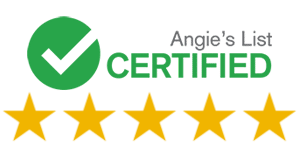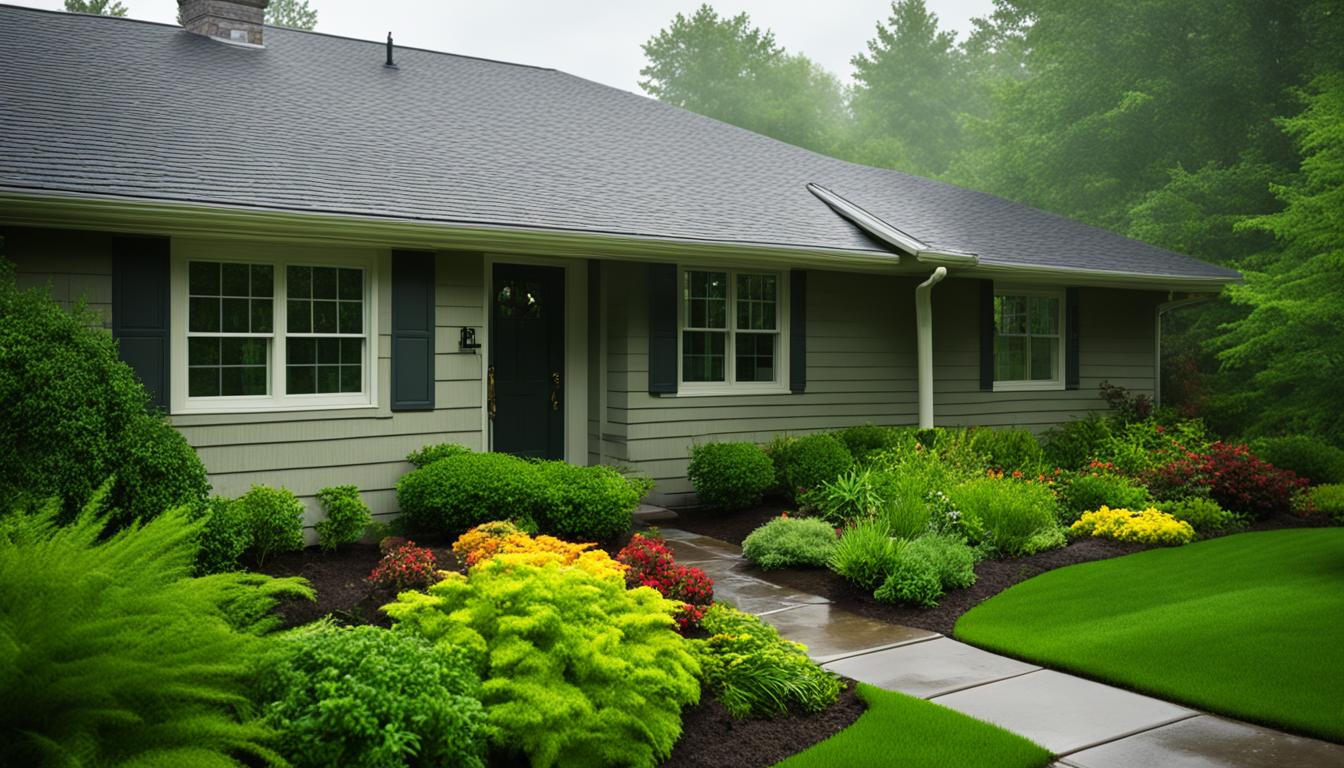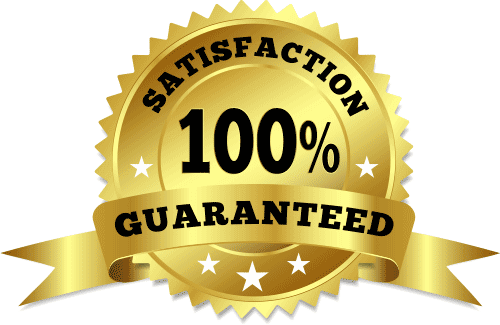In this article, we will discuss the main cause of water damage in homes and provide tips on how to protect your property from costly repairs and potential hazards. Water damage can be a devastating and expensive problem for homeowners, causing structural damage, mold growth, and health hazards. Understanding the common causes of water damage and taking preventive measures can help you safeguard your property and avoid the hassle and expense of repairs.
Key Takeaways:
- Plumbing issues are the most common cause of water damage in homes.
- Burst pipes, leaks, overflowing toilets, and faulty appliances can lead to significant water damage.
- Preventing water damage involves addressing plumbing issues, maintaining your pipes, and promptly fixing leaks.
- Regular inspections and maintenance can help detect and prevent water damage.
- Water damage can cause costly repairs and pose hazards such as mold growth and structural damage.
Understanding the Most Common Cause of Water Damage
The most common cause of water damage in homes is often related to plumbing issues. Burst pipes, leaks, overflowing toilets, and faulty appliances can all lead to significant water damage if not addressed promptly. Understanding these issues is crucial for prevention.
Plumbing issues, such as burst pipes, are a common cause of water damage. When pipes freeze due to low temperatures, the water inside expands, causing the pipes to burst. This can result in extensive water damage to your property.
Leaking pipes are another plumbing issue that can lead to water damage. Whether it’s a small drip or a steady flow, leaks can cause moisture build-up, structural damage, and potential mold growth if left unattended.
Overflowing toilets are also a frequent culprit of water damage. Clogs or faulty flushing mechanisms can cause toilets to overflow, flooding your bathroom and damaging surrounding areas. Prompt action is necessary to prevent widespread damage.
Faulty appliances, such as washing machines or dishwashers, can also contribute to water damage in homes. Malfunctions, leaks, or broken connections can result in water overflow, causing damage to floors, cabinets, and adjacent spaces.
By understanding these common plumbing issues and their potential consequences, you can take proactive measures to prevent water damage in your home. Regular inspections, maintenance, and prompt repairs are essential for safeguarding your property and avoiding costly repairs.
| Plumbing Issue | Potential Consequences |
|---|---|
| Burst Pipes | Extensive water damage throughout the property |
| Leaks | Structural damage, mold growth, and moisture damage |
| Overflowing Toilets | Flooding and water damage in the bathroom |
| Faulty Appliances | Water overflow and damage to floors and surrounding areas |
Burst Pipes: A Major Culprit of Water Damage
Burst pipes are a significant cause of water damage in homes. When a pipe bursts, it can result in extensive water leakage, leading to potential structural damage, mold growth, and costly repairs. Understanding the factors that contribute to burst pipes can help you take preventive measures and minimize the risk of water damage in your home.
Frozen Pipes
One of the main reasons for burst pipes is freezing temperatures. When water inside the pipes freezes, it expands and puts pressure on the pipe walls, causing them to crack or burst. This is especially common in colder regions or during severe winter weather. Insulating your pipes and keeping your home adequately heated can help prevent frozen pipes and reduce the risk of bursts.
Temperature Drops
Sudden drops in temperature can also trigger pipe bursts. When hot water flows through a pipe and then encounters a significant drop in temperature, the rapid contraction of the pipe material can cause it to rupture. It is essential to maintain a consistent temperature in your home and ensure proper insulation of exterior-facing or exposed pipes.
Pipe Age and Corrosion
The age and condition of your pipes play a vital role in their susceptibility to bursting. Over time, pipes can corrode, weaken, and develop cracks. Corrosion can be a result of chemical reactions with water, soil, or other materials. Older pipes made of materials such as galvanized steel or cast iron are more prone to corrosion and subsequent bursts. Regular inspections, maintenance, and replacing aging pipes can help prevent bursts and water damage.
By understanding the factors that contribute to burst pipes, such as frozen pipes, temperature drops, pipe age, and pipe corrosion, you can take proactive measures to protect your home from water damage. Regular pipe maintenance, insulation, and prompt repairs are essential for maintaining the integrity of your plumbing system and preventing costly water damage incidents.
Leaks: Silent but Destructive
When it comes to water damage, leaks are a silent but highly destructive force to be reckoned with. Whether they originate from your roof or plumbing, these hidden leaks can wreak havoc on your home if left unaddressed. Over time, the steady flow of water can cause extensive structural damage, promote mold growth, and result in moisture damage throughout your property.
Identifying and addressing leaks promptly is crucial to protect your home from the costly consequences of water damage. Regular inspections, both inside and outside your house, can help you catch leaks before they escalate into significant issues. Look out for signs such as water stains on ceilings or walls, musty odors, or unexplained increases in your water bill. These could indicate the presence of hidden leaks that require immediate attention.
Roof leaks are particularly problematic, as they can go unnoticed for extended periods, allowing water to infiltrate your attic and seep into your walls. This can compromise the structural integrity of your home, leading to potential hazards and costly repairs. Plumbing leaks, on the other hand, can occur in various areas such as pipes, faucets, or toilets. Even small drips can accumulate over time, causing significant damage.
To protect your home from the devastating effects of roof leaks and plumbing leaks, it is advisable to seek professional assistance. A qualified roofing contractor can inspect your roof for any signs of damage or potential leaks, while a licensed plumber can identify and fix plumbing leaks to prevent further issues. Remember, addressing leaks promptly not only safeguards your property but also preserves your peace of mind.
Common Signs of Roof Leaks and Plumbing Leaks
| Signs of Roof Leaks | Signs of Plumbing Leaks |
|---|---|
| Water stains on ceilings or walls | Dripping sounds |
| Missing or damaged shingles | Musty odors |
| Attic mold or mildew | Unexplained water puddles |
| Visible signs of water penetration | Decreased water pressure |
Overflowing Toilets and Faulty Appliances: Common Culprits
When it comes to water damage in homes, overflowing toilets and faulty appliances are all too familiar culprits. These common scenarios can lead to significant damage if not addressed promptly. Let’s take a closer look at how toilet clogs, toilet overflow, and appliance malfunctions can wreak havoc on your home.
Toilet Clogs and Overflow
Dealing with a clogged toilet is never pleasant, but it can also pose a serious risk of water damage to your bathroom and surrounding areas. A toilet clog can cause the water to back up and overflow, leading to water spreading throughout your bathroom floor and potentially damaging walls and other nearby fixtures.
It’s important to address toilet clogs as soon as possible to prevent overflow. Using a plunger or a toilet auger can often help dislodge the obstruction and restore proper flow. If you’re unable to resolve the clog on your own, contacting a professional plumber is recommended to avoid further damage.
Malfunctioning Appliances
Washing machines and dishwashers are essential appliances in our homes, but when they malfunction, they can become a source of water damage. Leaks from washing machines and dishwashers can go unnoticed for some time, causing damage to your floors, cabinets, and even adjacent rooms.
Regularly inspecting your appliances for any signs of leakage, such as water pooling around the base or unusual sounds during operation, can help you identify potential problems early on. If you notice any issues, it’s crucial to have them addressed by a professional appliance repair technician to prevent further damage and potential water-related hazards.
By being alert to the risks of toilet clogs, toilet overflow, and appliance malfunctions, you can take proactive measures to prevent water damage in your home. Regular inspection, prompt repair, and proper maintenance are key to protecting your property from the costly repairs and potential hazards associated with these common culprits.
Conclusion
Understanding the most common cause of water damage in homes is essential for protecting your property from costly repairs and potential hazards. By addressing plumbing issues, maintaining your pipes, and promptly fixing leaks or faulty appliances, you can prevent water damage and maintain a safe and damage-free home.
Plumbing issues, such as burst pipes, leaks, overflowing toilets, and faulty appliances, can lead to significant water damage if left untreated. Frozen pipes, aging pipes, and pipe corrosion are common factors that contribute to burst pipes. Regular maintenance and inspections can help identify and prevent potential issues.
Leaks, whether from the roof or plumbing, can be silent but highly destructive over time. They can cause structural damage, mold growth, and moisture damage. Regularly inspecting your home for leaks and promptly addressing them can prevent further damage and expensive repairs.
Overflowing toilets and faulty appliances, such as washing machines and dishwashers, are also common culprits of water damage. Clogged toilets and malfunctioning appliances can result in water spreading throughout your home. Regular maintenance, proper usage, and prompt repairs can help you avoid these situations.
FAQ
What is the main cause of water damage in homes?
The main cause of water damage in homes is often related to plumbing issues, such as burst pipes, leaks, overflowing toilets, and faulty appliances.
How can I protect my property from costly repairs and potential hazards?
To protect your property, it is crucial to address plumbing issues promptly, maintain your pipes, and promptly fix leaks or faulty appliances.
What are some common plumbing issues that can cause water damage?
Common plumbing issues include burst pipes, leaks, overflowing toilets, and faulty appliances like washing machines and dishwashers.
What are some factors that increase the risk of burst pipes?
Factors such as freezing temperatures, aging pipes, and pipe corrosion can increase the risk of a pipe bursting.
How can leaks cause water damage?
Leaks, whether from the roof or plumbing, can cause structural damage, mold growth, and moisture damage over time if left unaddressed.
What are some common culprits of water damage related to toilets and appliances?
Common culprits include toilet clogs and overflows, as well as malfunctioning washing machines and dishwashers that can leak and damage surrounding areas.
How important is it to address plumbing issues promptly?
It is essential to address plumbing issues promptly to prevent water damage, costly repairs, and potential hazards in your home.









